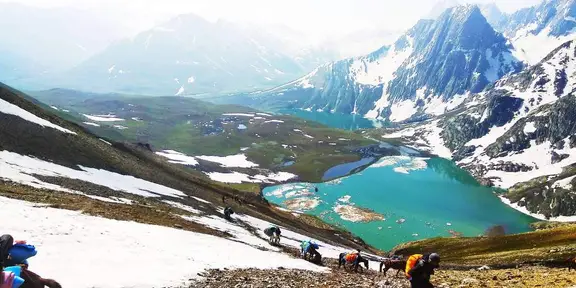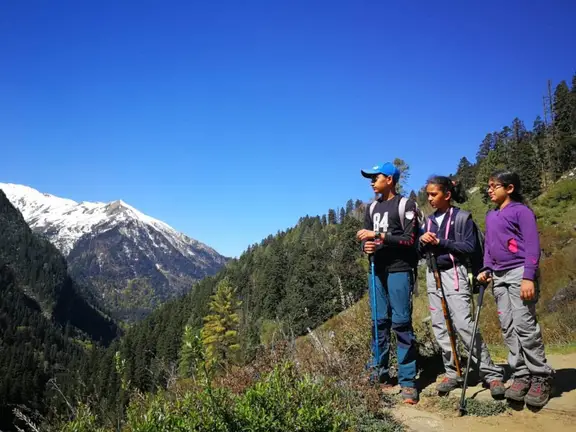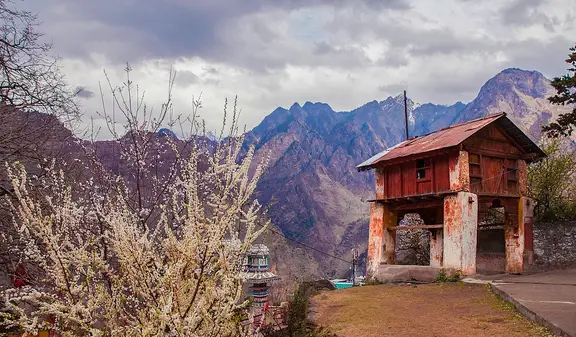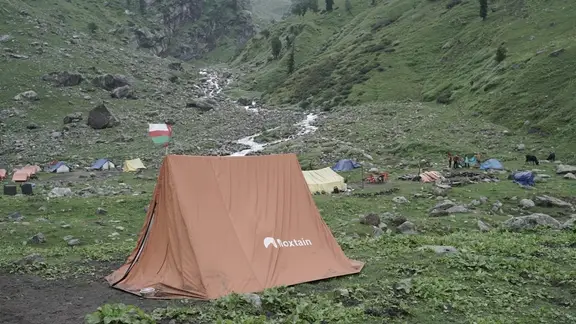High Altitude Sickness
Trekking in Himalayas is like the human dream in our era but one this to keep in mind is dreams cannot be fulfilled so easily.
One of the aspect that needs to be kept in mind while planning for treks is altitude sickness. It is a very common sickness that one can face on high mountain ranges. In simple terms, it can be understood as something similar to motion sickness in boats and airplanes. Everyone can go through altitude sickness just like motion sickness. Everybody can face altitude sickness, regardless of how in shape, young, or healthful they are -- even HULK can get it.
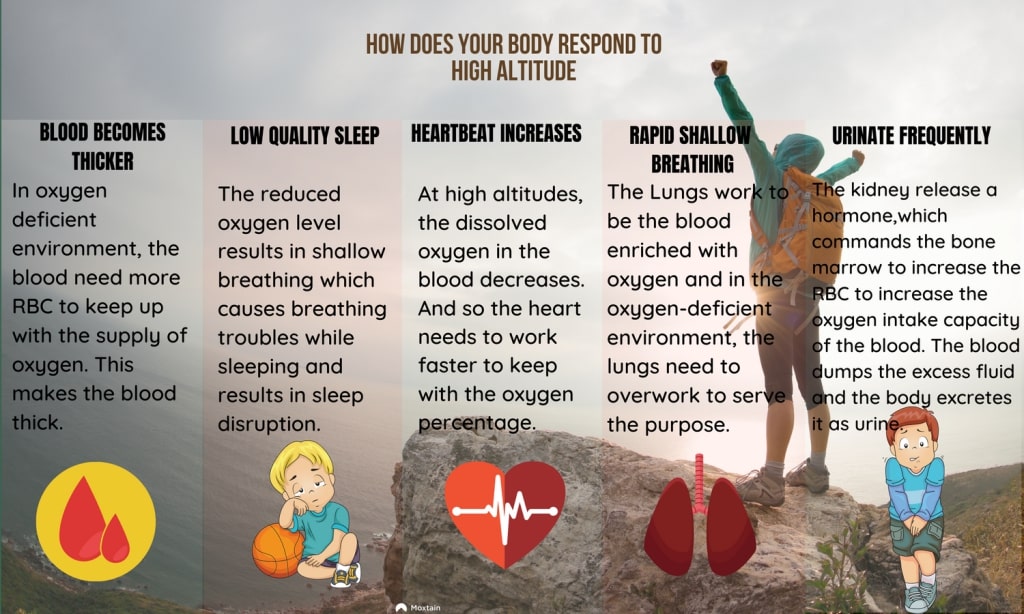
It’s okay! you need not panic when you got your information and precautions right. To have your dreamy trek successful, read on.
Altitude sickness, also known as mountain sickness, is a common phenomenon in the ranges. This sickness is a group of signs that could strike in case you stroll or climb to a higher elevation, or altitude, too quickly. To know what can help you during the sickness, you need to know the causes.
CAUSES
Altitude sickness is caused by the pressure of the air that surrounds you which is referred to as barometric pressure. When you go to higher altitudes, the air pressure drops and there may be much less oxygen available. Physical distress can be caused because lower oxygen pressure at high altitudes causes altitude sickness.
There is a chance that you can get used to these kinds of sickness if you live on higher altitudes, as your body knows how to survive on higher altitudes. However, if you walk to a place at a higher altitude than you’re used to staying on, your body will need time to adjust to the trade-in pressure. Any time you cross above 8000 ft, you could be at risk for altitude sickness.
Your chance of facing an altitude illness relies upon on a few other things:
- how quickly you move to a better elevation
- how high you go up, the altitude wherein you sleep
- The hazard also depends on where you stay and the altitude there
- your age, younger human beings are more likely to get it
- whether or not you’ve had altitude sickness before.
Having a sure illness like diabetes or lung disorder doesn’t make you prone to develop altitude sickness. However, your genes ought to play a function in your body’s ability to handle better elevations.
Altitude sickness has different types.

Altitude sickness is ranged into different segments according to their severity and which organ is facing the damage. Majority cases of altitude sickness are mild but can lead to life-threatening.
ACUTE MOUNTAIN SICKNESS (AMS)
Acute Mountain Sickness is the mildest shape and it’s very common. The symptoms are more like a hangover. They can be dizziness, headache, muscle aches, nausea. The body slowly gets used to these symptoms. Acute mountain illness is a syndrome of nonspecific symptoms and is consequently subjective. a) gastrointestinal signs like anorexia, nausea or vomiting, b) insomnia, c) dizziness, and d) lassitude or fatigue. The pathophysiological processes that reason acute mountain sickness are unknown. Signs of severe mountain sickness may be the result of cerebral swelling, either through vasodilatation prompted by way of hypoxia or through cerebral edema.
HIGH ALTITUDE PULMONARY EDEMA (HAPE)
In this sickness, lungs are the target of higher altitudes. A buildup of fluid inside the lungs that can be very risky and even life-threatening too. Early symptoms of HAPE include a nonproductive cough, dyspnea on exertion, and reduced exercise performance. Later, dyspnea occurs at rest. Clinical features are cyanosis, tachycardia, tachypnoea, and elevated body temperature generally not exceeding 38.5 degrees Celsius.
HIGH ALTITUDE CEREBRAL EDEMA (HACE)
It is a form of severe altitude sickness and happens while there’s fluid within the brain. It’s existence-threatening and you need to are trying to find clinical attention right away. This mild or severe sickness can be avoided if symptoms are better recorded and treated immediately. It generally appears in patients who have acute mountain sickness and involves disorientation, lethargy, and nausea among other symptoms.
Symptoms of Altitude Sickness
Symptoms tend to occur within hours after arrival at high altitude and include headache, nausea, shortness of breath, and inability to exercise and can increase or adjust in the next 12 to 24 hours. These are a few common symptoms that can be seen in all three types of sickness.
- Headache
- Dizziness
- Dausea
- Vomiting
- Fatigue and loss of power
- Fhortness of breath
- Troubles with sleep
- Loss of appetite
As high as you go, the symptoms may go worse or get adjusted to the symptoms. These are a few additional symptoms that one may face at higher altitudes. These symptoms are signs that the trekker needs to rest and think about his or well-being.
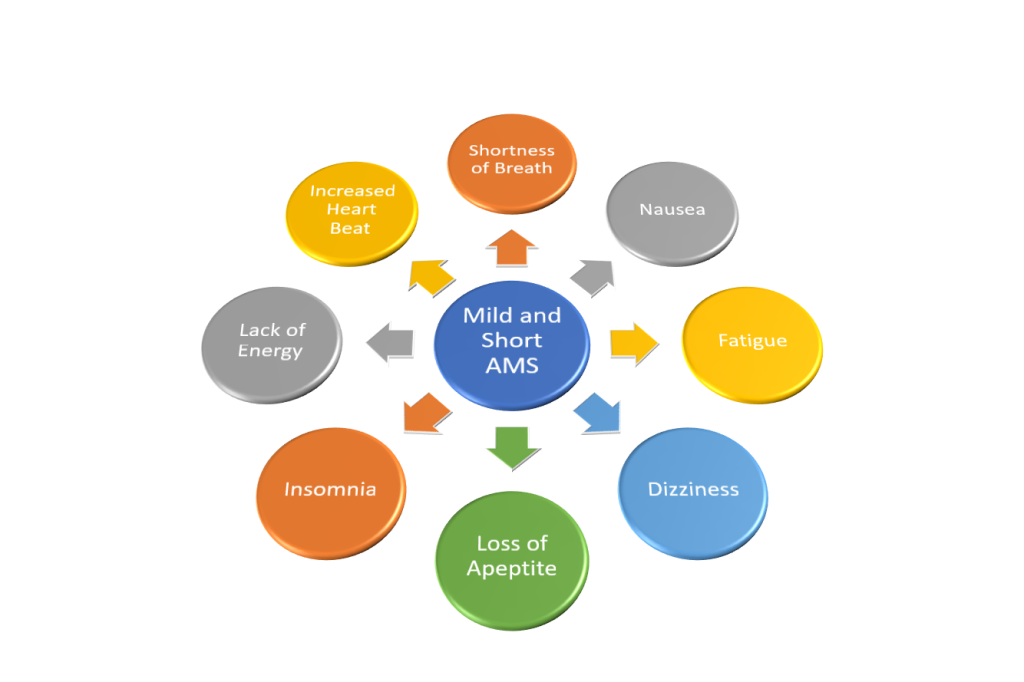
You’ll have greater shortness of breath and fatigue, loss of coordination and trouble walking.
A severe headache that doesn’t get better with medication
A tightening in your chest
If you have developed a severe form of altitude sicknesses like HAPE or HACE, you might have:
- Confusion
- Shortness of breath even at rest
- Inability to walk
- A cough that produces a white or pink frothy substance
- Coma
With these symptoms, one needs to seek treatment.
TREATMENT
Understanding the symptoms of altitude sickness will assist you in searching for treatment early, while the situation is still moderate. The maximum critical remedy for any level of altitude sickness is to head right down to a lower elevation as soon as feasible while last secure.
If you get a headache and minimum an extra symptom related to altitude sickness within a day or two of changing your altitude, you might have altitude sickness. In case your symptoms are extra severe, you’ll want clinical interest.
If you have extreme altitude sickness, you’ll need to be taken right down to a lower elevation right away and it should be lower than 4000 ft. You’ll see a doctor as quickly as possible and you could need to go to the hospital immediately.
When you have HACE, you might want a steroid referred to as dexamethasone. If you have HAPE, you may want supplemental oxygen and may want medicinal drugs, in addition to shifting to a decrease altitude.
The treatment highly depends on the severity of the sickness. Mild cases can be resolve in one to three days with proper treatment. Severe cases may require oxygen, medication, and moving to a lower altitude.
If you are someone who Considers taking a vitamin or supplement to treat Altitude Sickness. Here are a few sets of natural remedies used for altitude sickness. To note that these treatments are not proven and should be taken only after doctors’ advice.
- Alpha-Lipoic Acid
- Ginkgo
- L-Arginine
- Magnesium
- N-Acetyl Cysteine (Nac)
- Rhodiola
More then any treatment one should concentrate on precaution even before the trek starts.
PRECAUTIONS
The exceptional manner you can lower your danger of getting altitude sickness is through adaption. That means you permit your body to slowly get used to the modifications in air pressure as you trek to higher elevations. This can be done through the climb to higher altitudes gradually. Going slow can allow your lungs to get more air through deeper breaths and lets in greater of your red blood cells to carry oxygen to unique elements of the body.
Start your journey underneath 10,000 feet. If you are starting your journey above this, it is advisable that multiple stops are taken with full daybreak.
If you stroll, hike, or climb over 10,000 feet, the most effective method is to take a break at every 1,000 ft in step with day. For every 3000 feet, you climb, rest at the least an afternoon at that peak.
Climb high and sleep low. if you have to climb over 1,000 feet in a day, make sure you come to walk back to a decrease in altitude to sleep.
Drink 3-4 quarts of water every day and make sure approximately 70% of your calories are coming from carbs.
Don’t use tobacco, alcohol, or different medications, together with slumbering drugs.
As written before, anyone can get illness sick at a higher altitude, regardless of how to suit, younger, or wholesome they are, even hulk can get it. In truth, being bodily energetic at a high elevation makes you much more likely to get it.
Understand the way to pick out the primary signs and symptoms of altitude sickness. Immediately pass to a decrease elevation if you begin to broaden these signs. Have a safe trek to your dreamy Himalayan ranges and avoid sickness.





